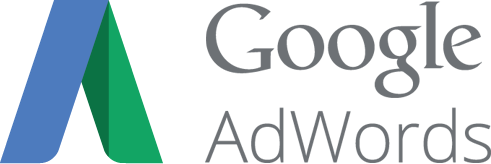Create The Movement Podcast #10
Brad Post, Create the Movement: Welcome to Create the Movement podcast. My name is Brad Post, and I’m sitting here with Josh Rich. Josh, how are you?
Josh Rich, Create the Movement: Doing great. Brad, how are you?
B: Doing well.
J: Excellent.
B: In this podcast, a few podcasts ago we were talking about social media, just overall.
J: Kind of paid advertising.
B: Paid advertising. What today do you specifically?
J: We’re going to touch on Facebooks ads.
B: Okay.
J: And the reason why we’re going to do that, I kind of feel that if someone is just starting out doing a paid social media campaign, Facebook’s really the way to go.
B: Okay.
J: There’s a couple of reasons for that. First of all, in 2014, Pew Research Firm did a research study abou who all, how many people are on different social media platforms.
B: Pew, like smells “pew”?
J: P-E-W.
B: Okay.
J: They’re a big name. Basically, of adults that are on the internet actively, in some form, 71% on Facebook.
B: Wow.
J: 28% are on LinkedIn. Another 28 are on Pinterest. 26 are on Instagram. And 23 are on Twitter.
B: Wow. LinkedIn’s taking over Twitter.
J: Yeah. But, Facebook is like kicking butt. 71%. I mean, not even close to anything else.
B: Okay.
J: Definitely your biggest audience, for sure. And another couple of reasons: first of all, they make it really easy to advertise. I think they give you the most tools. It can be the most-targeted, because people put so much of their interests on there. LinkedIn is pretty targeted too, I guess, that’s a different market entirely. You don’t really sell things on LinkedIn, typically.
B: Right.
J: Also, you can have the most formats. You can display on the side. You can do a newsfeed. You can change it up pretty easily.
One thing also, I looked at was click-through rates. Surprisingly, I really couldn’t find any good data on that.
B: Okay.
J: I don’t know if maybe it’s because paid ads are kind of a new thing in social media. In some cases, Facebook was better. In some cases, Twitter was better. It kind of depended on where I was looking. But, overall, I think that averaged-out, they’re probably the same click-through rates. But, I still think, given all the other reasons, I think Facebook is the way to go.
B: Okay.
J: So, whenever you’re starting a Facebook campaign, there are two things you need to narrow down first. The first one is your budget. The second one is your audience.
So, the way that the budget works, I think I kind of touched on this last time, but to review, they have this term called Cost Per Optimized Impression. It’s basically a fancy way of saying cost per impression.
B: Okay.
J: So, opposed to a pay-per-click, which is like you pay every time you click on it.
B: Right.
J: So, the marketing term here is: CPM. Which stands for cost per thousand. Not cost per million. Basically, that means per every thousand impressions, and impression every time someone looks at it, it’s going to cost you this much.
B: Okay.
J: So, a two-dollar CPM means, that for every thousand people that look at it, it’s going to cost you two-dollars.
B: Facebook will spend your money, too.
J: Right! They will. So, Facebook calls it Cost per Optimized Impression, which basically just means that they have this special formula that optimizes the impressions to make it more favorable for you.
B: Okay.
J: But anyways, that’s how the budgeting works. So first, obviously, “How much do you want to spend?” And I’ve said this before, but, you need to plan for three months. If you can’t afford to do something for three months, then you shouldn’t do it.
Now, within that three months, you should also be changing things. Don’t just ‘set it and forget it’ for three months, then see what happens. Do some split testing. Try some different colors. Try some different words. See what happens.
You also want to think about scheduling for budgeting. So, if you sell hats and gloves, and a cold front’s coming in, you’re probably going to want to focus your spending on that cold front. Be cautious of current events, of sales you’re having, happenings within the company, and the culture and talent around you. So, that’s budgeting. They make the budgeting tool really easy to set it how long, and how much. It’s pretty user friendly.
B: I mean; you can even start out with five dollars.
J: Yeah, yeah.
B: Like you said, you want to go three months, you need to have somewhat of a budget.
J: You can make it as small as you want. That’s kind of the beauty of it.
The second one is audience. And so, the first thing I want to say about this is, you need to be targeted. Probably one of the most common misconceptions from people that aren’t from a marketing-background, they want to cast a wide net and try to appeal to everyone. But, you cannot be all things to all people. Especially, whenever you’re doing paid ads. The more targeted you are, the more efficient your campaign’ is going to be, and the more money you’re going to save because you’re not wasting it on people who don’t care about your product. And won’t ever care about your product or service.
So, in some cases you’ll be a little wider if you’re selling socks. You can be pretty targeted because everyone needs basic white socks. Right? But if you’re selling a service, or more specified product, like a high-tech thing, then you need to focus on your target audience, and who they are.
So, Facebook again makes this really easy. There are basically four ways you can do this.
The first one is using the Audience Insight tools. And so, it’s a little tab on the left-side of your screen. And basically, what it’ll do, it will give you all the audience insights for all of Facebook.
B: Okay.
J: And then, you can start typing in different interests. So, like “soccer”, or “trucks”, or “the outdoors”, or whatever you think it is, and it will start narrowing it down. It skews more toward male, or more towards women, or this age gap, or this demographic. So, that will help you narrow it down to figure out what your audience is.
B: Okay.
J: And so, it’s good to use both broad and narrow interests when you do this. So, you might do like, “hockey” and “sports”. That way you kind of get the wide and the specific.
B: Okay.
J: So, you can do that. Or, if you have a 1000 followers on your page, you can use the analytics off of your own page. It will tell you which way it skews. But if you don’t have a 1000 followers, you can’t really do that.
B: Oh, really? You have to have a 1000?
J: Right. Facebook won’t allow you to do that.
B: On your business page?
J: Yes.
B: Okay.
J: And it will tell you like, which demographic or psychographic is more likely to engage with your post. Kind of give you who is a more engaged audience in your page.
B: Okay.
J: So, that’s like, a great way to do it. And then you just find friends, you can figure out who is more engaging, and then target them.
B: Okay.
J: Another way, this one’s a lot more complicated to do, but if you have a list of phone numbers, or emails, or IP addresses from your website, there’s a way to dump that into Facebook. You just have to generate a tracking pixel and dump it in there. It’s a lot more complicated, and it’s kind of hard to explain on a podcast.
B: Meaning people that come to your site, you can see where they’ve coming from?
J: Right, exactly. It’s almost like a re-targeting campaign.
B: Okay.
J: That’s a little more complicated to set up. So, if it’s you’re first time,
B: Hire somebody.
J: Yeah, unless you’re really just kind of techie and know that kind of stuff.
Or, the final way, is just to create an audience. If you just kind of know what your audience is like already. You can just type in different interests and different age gaps, and it will – you can name them, you can have different ones. And that’s also a good idea too, for budgeting. For split testing. Is trying different audiences.
B: Okay.
J: Try one and then change it up. Make some changes.
B: Geographical targets? That’s good?
J: Absolutely. That’s a good one too, if you don’t just sell within
B: Nationally. You sell within a smaller area.
J: So, that’s Facebook ads in a real, brief nutshell.
B: All right. Good. And I’ve heard a lot, lately, about, hey, if you want to get started in paid advertising, like you said, start in Facebook. It’s one of the most efficient, effective ways that you can kind of test markets.
J: Yeah. Facebook themselves has really great instructional videos. So, if you feel like you’re getting lost, you can just refer to them. Or, they’ve got a pretty decent customer support system, as well. You can chat or call.
B: One of the key things in Facebook ads is, if you have a business page, since they changed the algorithm, and you post something, it doesn’t really show up in many people’s feeds.
J: Right. Unless, people are really engaging with it.
B: Yeah. Or, they’re sharing it, or they’re ‘liking’ it, or they’re coming back to your page.
J: Right.
B: But, for the most part, you don’t get a lot of views unless you pay to play.
J: Exactly. And we’re like just shy of a 1000.
B: Yeah! I wrote that down as a next goal. Get over 1000.
J: Right. I looked into posts of ours, and it was like 19 impressions. You’ve got to pay to play.
B: Right. Well, you’ve been listening to the Create the Movement podcast. Join us for our next edition.











